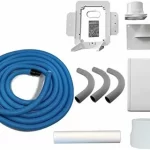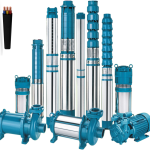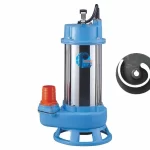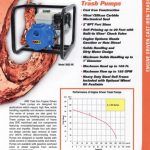Fire safety is not something to take lightly. When a fire emergency occurs, every second counts and the tools you have on hand matter. A reliable hose setup can make all the difference when paired with a powerful fire pump system. Installing a Hose Kit for Fire Protection Pumps correctly ensures that your pump performs when it is needed most. In this guide, you will learn the right way to install your fire pump hose kit, how to prepare your setup, and mistakes to avoid. We will also help you understand why proper assembly is essential for home, farm, and commercial safety applications.
We provide durable fire pump systems designed for reliability and performance. This guide complements those systems by helping you set up the hose kit correctly, so you have confidence when an emergency strikes.
Understanding Your Fire Pump Hose Kit
Before you begin installing anything, you need to understand the components in your hose kit. Many people rush to connect parts without checking compatibility or flow rating, which can lead to performance failure. A typical hose kit includes:
- Heavy duty fire hose
- Quick connect couplings
- Spray or fire nozzle
- Suction fittings
- Hose clamps
- Camlock connectors
- Threaded adaptors depending on pump type
These components work together to deliver high pressure water output. The hose and fittings must match the flow capability of your fire pump, especially for high power gas or diesel fire pumps. If your hose is not rated for high pressure, it may burst under strain. That is why choosing a complete kit designed specifically for fire protection pumps matters.
Preparing for Installation
Before installing your kit, take a few minutes to prepare your setup. Fire protection systems require clean water access, sturdy hose fittings, and secure placement. Proper preparation prevents leaks, pressure loss, and system failure.
Check Your Pump Compatibility
Ensure your pump and hose kit are matched in terms of:
- Hose diameter
- Pressure rating
- Thread type or quick connect fitting
- Pump flow rate
A Hose Kit for Fire Protection Pumps is typically designed to fit portable fire pumps commonly used for rural homes, farms, and emergency irrigation. If your pump uses metric fittings or has unique adapters, confirm your kit supports them.
Inspect All Parts for Quality
Look for:
- Cracks in the hose
- Loose couplings
- Damaged gaskets
- Rust or corrosion on parts
Replacing damaged parts early prevents disaster during operation.
Step by Step Installation Guide
Now let’s move step by step through installing your hose kit safely. These steps apply whether you are mounting your pump permanently or using a portable unit for seasonal wildfire protection.
Position Your Pump
Place your fire pump near a water source like a pond, pool, rainwater tank, or outdoor line. Fire pumps need stable ground. If your pump vibrates during use, secure it to reduce movement. You want quick access in case of emergencies.
Install Suction Connectors
Connect the suction fittings to the intake of your fire pump. Attach the strainer at the end of the suction hose if you are pulling water from a natural source. This prevents debris from entering and damaging the pump.
Be sure all clamps are tight and no air leaks exist. Air entering the line due to poor sealing can stop water flow entirely.
Connect the Discharge Hose
This is where your Hose Kit for Fire Protection Pumps plays a major role. Attach your discharge hose to the pump outlet using camlock or threaded connectors. Ensure the gasket inside the connector is seated properly for a secure fit.
Avoid twisting the hose. Lay it straight and ensure it has room to extend without obstruction. This allows maximum water pressure and reach.
Attach the Nozzle
Choose the spray nozzle or jet nozzle depending on your needs. A spray nozzle is ideal for close-range protection and wetting surrounding areas. A jet nozzle helps you reach longer distances, making it useful for larger properties and outbuildings.
Once attached, test movement and adjust your grip position.
Test Your System Before Use
Never wait for an emergency to test your fire setup. Prime your pump and run water for a few minutes to ensure:
- Steady pressure
- No dripping joints
- Smooth nozzle control
- Good reach and spray pattern
If pressure dips, recheck fittings and tighten any loose clamps.
Tips for Best Performance
Keep Your System Maintained
Fire protection systems should not sit untouched for months. Run your pump occasionally to keep seals from drying and hoses from stiffening. Store hoses in cool dry spaces when not in use. Replace cracked hoses immediately.
Train Family or Staff
Even the best fire protection pump kit is useless if nobody knows how to operate it. Teach family members or staff how to:
- Start the pump
- Connect the hose
- Aim and control the nozzle
- Shut down safely
Add Extra Hose Length if Needed
Long driveways, barns, and open fields benefit from additional hose length. Choose rated fire hoses to maintain high pressure delivery.
Why Proper Installation Matters
A poorly installed fire pump hose kit can lead to:
- Water pressure loss
- Hose blowouts
- Pump damage from air intake
- Wasted time during emergencies
Every connection counts. Take your time and treat installation like a safety investment. A correctly installed hose kit gives peace of mind.
FAQs
1. What size hose works best for fire pump systems?
Typically, a one inch fire hose works best for portable fire pumps due to high flow capacity and easy handling.
2. How often should I test my fire pump hose kit?
Test at least once per month and always before high-risk wildfire seasons.
3. Can this hose kit be used with other pumps?
Yes, but check sizing, thread type, and pressure compatibility first.
4. Do I need a strainer on the suction line?
Yes, especially when drawing water from lakes, ponds, or open tanks to keep debris out.
5. How long do fire hoses last?
With proper care, a quality hose can last years. Replace immediately if you notice cracks, leaks, or stiffness.
Conclusion
Installing a Hose Kit for Fire Protection Pumps is one of the most valuable steps you can take to protect your property from unexpected fire threats. With the right setup, proper fittings, and routine testing, your fire pump system becomes a reliable defense line when every second matters. Preparation today means peace of mind tomorrow. Whether you’re guarding a home, farm, workshop, or rural building, having a correctly installed and well-maintained fire hose kit ensures you have strong water pressure, controlled spray, and fast response when danger appears. Take time to review your system, keep your components clean and ready, and make sure everyone around you knows how to operate the pump. A well-installed fire protection hose kit is more than equipment—it is confidence, readiness, and true safety for your space.







